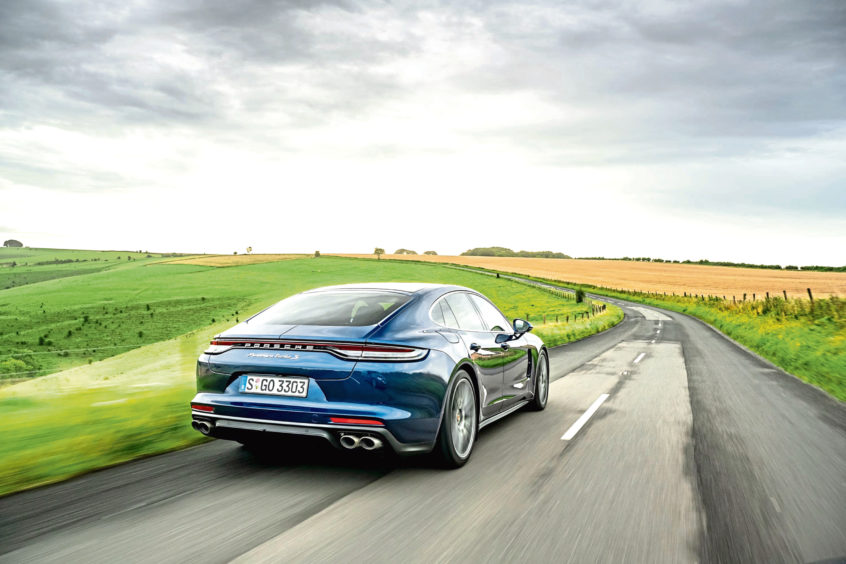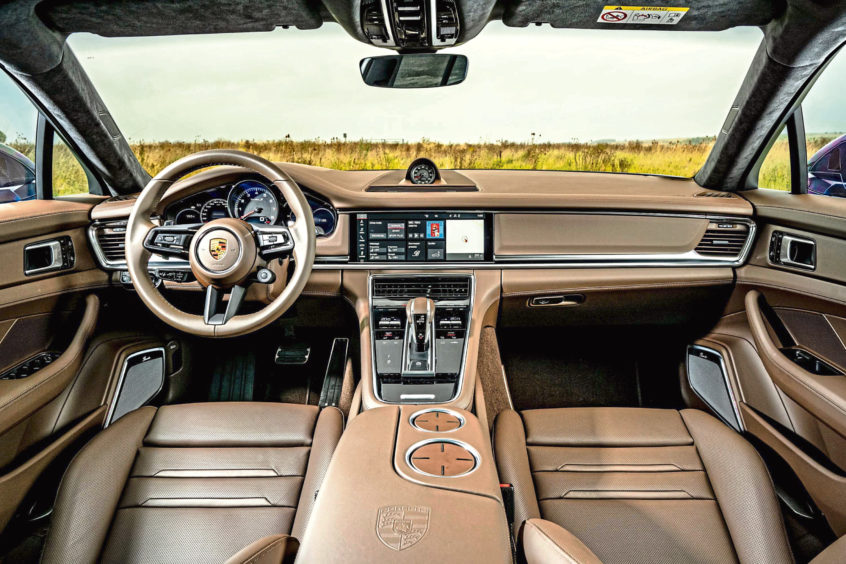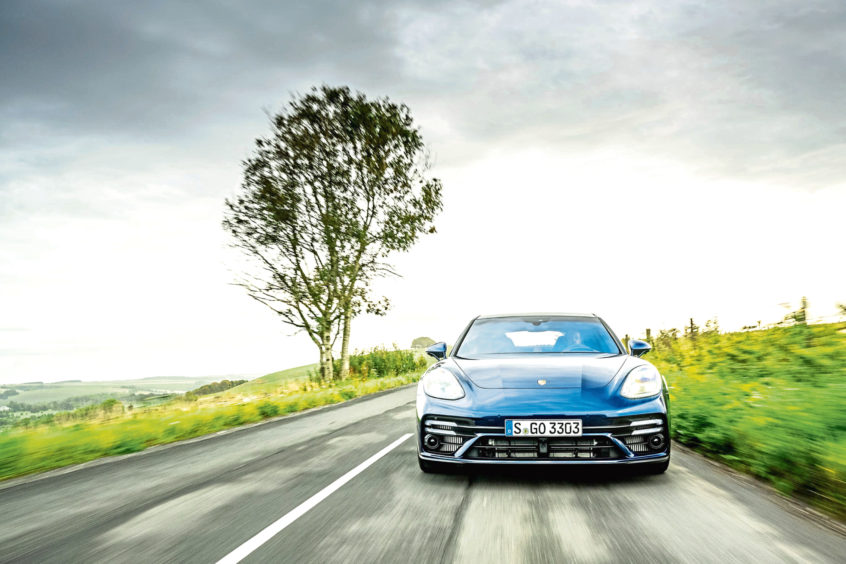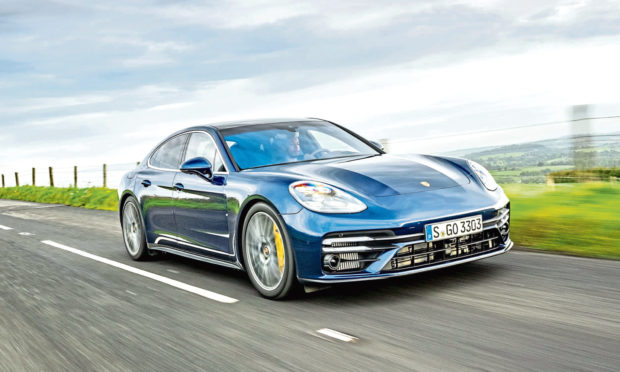The Panamera is Porsche’s big, bruising performance executive car.
For some time now, it’s set the benchmark for driver involvement in this segment, outgunning rivals when it comes to outright excitement behind the wheel.
Now, Porsche has seen fit to update it, tweaking the way it looks – ever so slightly – while adding a decent slug more power.
We’re testing it in full-fat Turbo S specification, which stands as the most powerful Panamera in the range.
Let’s buckle up and find out what it’s like.
From the outside at least, it doesn’t appear that much has changed with the Panamera. It’s still vast in proportion, with the front and rear of the car separated by what feels like a postcode’s-worth of wheelbase.

The nose of the car has been given a tweak in terms of design, mind you, but it’s largely the same look as the Panamera we saw released in 2019.
It’s underneath where things have been given a considerable tweak.
The damping has been improved, for instance, while the front axle bearings and engine mountings have been revised to increase the level of dynamic response you get.
The Panamera Turbo S is powered by a thumping 4.0-litre twin-turbocharged V8 engine that makes 621bhp and 820Nm of torque. It represents gains of 79bhp and 50Nm over the old Turbo model, in fact.
Power is sent to all four wheels through an eight-speed automatic gearbox and, when given enough space, means that the Panamera Turbo S will hit a top speed of 196mph, while the sprint to 60mph takes just under three seconds – not bad for a car weighing more than two and a half tonnes.
Of course, as a result of this performance, the Panamera’s economy isn’t the best. CO2 emissions stand at up to 245g/km, while combined it will return 26.4mpg.
The steering is light enough around town to easily pilot it through smaller spaces, while the newly revised suspension does an excellent job of isolating the lumps and bumps on the road from the cabin.
Rear-wheel steering means it’s genuinely nimble at lower speeds, too.
Then there’s the performance. A car of this size accelerating the way the Panamera Turbo S does is nothing short of startling; even moderate uses of throttle result in a considerable amount of forward progression.
Full throttle results in you hitting the national speed limit in the blink of an eye.
But the steering is the star of the show.
It’s effortlessly well-weighted, and it means you can enjoy the Panamera through the bends just as much as the earth-shattering straight-line performance.

You can add weight to the steering via the various driver modes, but in truth, it’s just right in its standard setting.
The changes that have been made to the exterior of the Panamera have certainly tweaked what was already a rather good-looking sports saloon, making it a little sharper.
We’d always plump for the Sport Turismo version (the estate) which, in our eyes, looks even better.
The rear of the regular Panamera, which can, from some angles, appear a little dumpy, is replaced by a swooping back in the Sport Turismo, only enhancing the overall look of the car.
The cabin of the Panamera feels instantly luxurious. The materials are high-end and fitted seamlessly together, while the combination of glass, metal and leather is a tried-and-tested way of making a car’s cockpit feel genuinely special. It certainly works here.
It does feel like you sit a small amount higher than you’d expect, but with good levels of adjustability for the steering wheel it’s not hard to find a comfortable driving position.
The large screens ahead of you in the instrument binnacle are clear and easy to read, while the sport mode dial on the steering allows you to easily tailor the car’s setup to your needs. It’s a great combination of the old and new.
There’s a good amount of legroom in the back, too, while 467 litres of boot space isn’t too bad for a car in this segment. It can be increased by folding the rear seats down, pushing the size up to 1,306 litres.
The Panamera is a car which is laden with equipment – as you’d expect from a car costing well over £130,000.
The main infotainment offering is centred around a large, clear screen in the middle of the dashboard which now includes wireless Apple CarPlay connectivity for the first time.
Porsche’s own software, however, is just as clear to use while haptic feedback buttons lower down towards the gearstick are responsive and easy to use.

All cars now ride on 21-inch wheels as standard, too, while Porsche’s range of suspension systems – including adaptive air suspension, rear-axle steering and the firm’s power steering plus – all come as part of the Panamera’s base price.
The tweaks that Porsche has made to the Panamera have only helped to elevate an already impressively capable saloon car.
The steering adjustments have made it sharper, while the added performance on this Turbo S only makes driving it even more exciting.
Little has changed about its positioning in the segment, then. It easily manages to be the best-handling car among its peers and that’s why, yet again, the Panamera is a car we can wholeheartedly recommend.
THE FACTS
- Model: Porsche Panamera Turbo S
- Price: £135,610
- 0-60mph: 2.9 seconds
- Max speed: 196mph
- Economy: 26.2-26.4mpg
- CO2 Emissions: 247-245g/km
